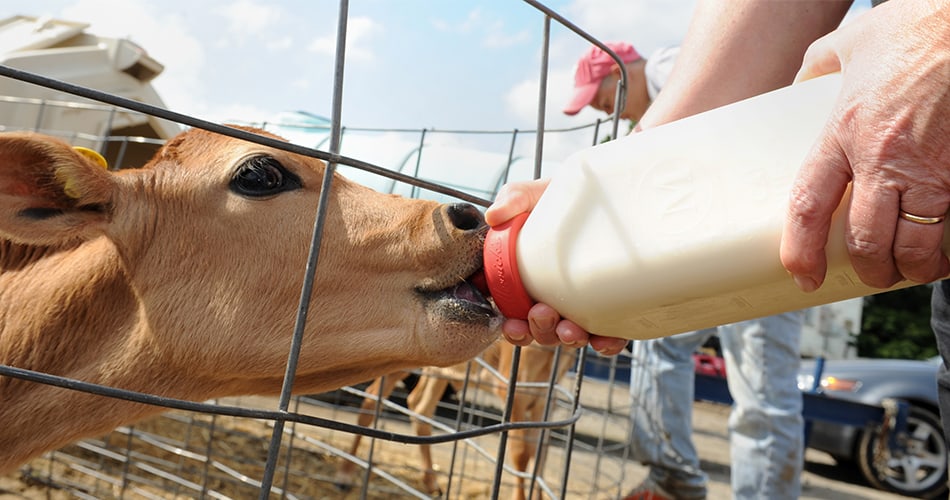What Eats Cows?
Cows, as large herbivorous mammals, are preyed upon by various carnivorous and omnivorous species. While cows are typically safe on farms, they can fall victim to predators in certain situations. This article will explore the natural predators of cows, the impact of predation on cattle populations, and the measures taken to protect cows from these threats.
Natural Predators of Cows
Cows, being large and relatively slow-moving animals, have few natural predators in the wild. However, some species have been known to prey on cows, especially calves and young individuals.
1. Wolves
Wolves are one of the primary predators of cows in areas where their habitats overlap. Wolves typically hunt in packs, making them more effective at taking down larger prey like cows.
2. Coyotes
Coyotes are opportunistic predators that may prey on young or sick cows. They are more likely to target calves and are known to attack cows in groups.
3. Mountain Lions (Cougars)
Mountain lions are solitary hunters that ambush their prey. They have been known to attack cows, especially calves, in areas where their habitats intersect.
4. Bears
Bears, particularly grizzly bears and black bears, may occasionally prey on cows, especially calves. However, bear attacks on cows are relatively rare.
5. Feral Dogs
Feral dogs, often in packs, can pose a threat to cows, especially in areas where they have become established. They may target calves or weaker individuals.
Predation Rates and Impact
While predators can pose a threat to cows, the overall impact of predation on cattle populations is relatively low. According to the United States Department of Agriculture (USDA), only 0.23% of cattle deaths in 2010 were attributed to predation by native carnivores and dogs.The majority of cattle deaths are caused by non-predatory factors such as respiratory problems, digestive issues, calving complications, and weather conditions. In 2010, these factors accounted for nearly 4 million cattle deaths, far exceeding the 220,000 cattle lost to predators.
Protecting Cows from Predators
Farmers and ranchers employ various methods to protect their cattle from predators. These methods include:
- Fencing: Installing sturdy fences around pastures and enclosures can help deter predators and keep cows safe.
- Guard Animals: Using animals like donkeys, llamas, or guard dogs to patrol pastures and alert farmers to the presence of predators.
- Predator-Proof Shelters: Providing secure shelters for cows, especially during calving season, can help protect them from predators.
- Herd Management: Keeping cows in larger herds and maintaining a strong herd structure can make it more difficult for predators to single out individual animals.
- Lethal Control: In some cases, farmers may resort to lethal control measures, such as hunting or trapping predators that pose a significant threat to their cattle. However, this method is controversial and often seen as ineffective in the long run.
Conclusion
While cows face threats from various predators, the overall impact of predation on cattle populations is relatively low compared to other factors such as disease and weather conditions. By employing a combination of preventive measures and herd management techniques, farmers can effectively protect their cattle from predators and ensure their well-being.
FAQ Section
Q1: What are the main predators of cows?
A1: The main predators of cows are wolves, coyotes, mountain lions, bears, and feral dogs.
Q2: How often do cows fall victim to predators?
A2: In 2010, only 0.23% of cattle deaths were attributed to predation by native carnivores and dogs.
Q3: What are the leading causes of cattle deaths?
A3: The leading causes of cattle deaths are respiratory problems, digestive issues, calving complications, and weather conditions.
Q4: How can farmers protect their cows from predators?
A4: Farmers can protect their cows by using fencing, guard animals, predator-proof shelters, maintaining strong herd structures, and in some cases, lethal control measures.
Q5: Is lethal control an effective method for protecting cows from predators?
A5: While lethal control can be used to address predators that pose a significant threat to cattle, it is often seen as ineffective in the long run and controversial.
Q6: Can predators single out individual cows from a herd?
A6: Predators are less likely to target individual cows when they are kept in larger herds with a strong herd structure.
Q7: Are calves more vulnerable to predation than adult cows?
A7: Yes, calves are more vulnerable to predation and are more likely to be targeted by predators like wolves, coyotes, and mountain lions.
Q8: Do bears frequently prey on cows?
A8: While bears, particularly grizzly bears and black bears, may occasionally prey on cows, bear attacks on cattle are relatively rare.
Q9: Can feral dogs pose a threat to cattle herds?
A9: Yes, feral dogs, often in packs, can be a threat to cows, especially in areas where they have become established.
Q10: Where can I find more information about cattle predation and protection?
A10: For more detailed information, you can visit the Wikipedia page dedicated to cattle.
Summary Table
| Predator | Threat Level | Typical Prey | Hunting Behavior |
|---|---|---|---|
| Wolves | High | Calves, adult cows | Pack hunting |
| Coyotes | Moderate | Calves | Opportunistic, group hunting |
| Mountain Lions | Moderate | Calves | Ambush predator |
| Bears | Low | Calves | Opportunistic |
| Feral Dogs | Moderate | Calves, weak individuals | Pack hunting |
This article provides a comprehensive overview of the natural predators of cows, the impact of predation on cattle populations, and the measures taken to protect cows from these threats. By understanding the risks and employing effective preventive strategies, farmers can ensure the safety and well-being of their cattle herds.



